By Alex Cox
My obsession with the spaghetti western started early. Mostly, I blame my schooling. While it’s thought that girls do better, academically and socially, if educated separately from boys, the awful corollary of this is that boys would be educated separately from girls. And that – as I discovered when attending a single-sex grammar on the Wirral in the mid-1960s, where arbitrary violence and crazed sadists ruled the playground – is a horrible thing.
Had I gone to a mixed-sex school, in a richer, more emotionally balanced environment, maybe I’d have developed a different cinematic outlook, a more nuanced and finely tuned take on things. But things work out the way they do, and my interests as a filmgoer tended towards this mad-boy stuff. Sure, I could appreciate a film such as Tony Richardson’s Loneliness of the Long-Distance Runner (1962), with its northern anti-hero who refused to play by the rules. But the world I knew best had more in common with the psychos and testosterone freaks depicted in the new Italian, or spaghetti, westerns that emerged during this period.
By this time, the American western had deteriorated drastically. A once fine and vigorous film genre – a uniquely American art form – was on its last legs. The great American westerns, films such as John Ford’s Stagecoach (1939) and Fort Apache (1948), mixed both pessimism and optimism in a heady stew; later, in the 1950s, the form was undercut by “political” westerns such as High Noon (1952), a parable of the McCarthy period starring Gary Cooper and Grace Kelly, and Run of the Arrow (1957), in which the hero was an Irish-Confederate-renegade-Sioux and the villain a US cavalry officer.
Having created its own myth and thoroughly critiqued it, where could the western go from here? Into retreat, it seemed to me as a lad; all I saw at the cinema were ponderous Technicolor bores, usually starring John Wayne and directed by some superannuated Hollywood hack. Wayne, like his master, John Ford, had become both a film director and a political reactionary. Both made films in support of the US war in Vietnam: Wayne’s was a maudlin drama, The Green Berets (1968); Ford’s an unscreenable documentary, Vietnam! Vietnam! (1971). In these men’s minds, defending the Alamo from the Mexicans and rolling back communism in south-east Asia were the same thing. Television westerns were even worse, banal soap operas about patriarchal ranchers and their clans such as Bonanza, The Virginian and The High Chaparral.
Then the Italians rode into town. For them, westerns were a great fantasy world, something they had enjoyed in films or comic books. Yet their take on the Wild West was something quite different. Hollywood had chosen to manufacture a certain type of product, pretending this was what the audience wanted: it was sentimental, propagandistic, authoritarian stuff. The Italian directors made cynical – ironic would be too mild a word – popular action films, sometimes about gladiators, sometimes about spies. All featured the kind of infantile male violence that greatly appealed to teenage boys such as me and my classmates. The fact that the Italian westerns tended to receive an X certificate – and were, therefore, banned to all under 16 – made the thrill even bigger to 13- and 14-year-old boys.
Beyond the violence, the Italian directors shared a sense of radicalism, of anarchy, of a moribund fantasy world being turned on its head to reveal terrible truths, social and political. Francesco Rosi made great political histories, The Mattei Affair (1972) and Lucky Luciano (1973), and Bernardo Bertolucci depicted fascist Italy in The Conformist (1970). Others made the western their political battleground. Damiano Damiani’s Quién Sabe (1966, also known as A Bullet for the General), was a western about covert US intervention in Latin America; Sergio Corbucci turned out a string of tirades against polite society disguised as cowboy films, where priests and pacifists are apt to be shot, or have their ears cut off, as in Django (1965). In The Big Silence (1968), Corbucci presciently depicts a banker as the devil incarnate. And, more than two decades before Stone’s JFK, Sergio Leone’s assistant Tonino Valerii made The Price of Power (1969), a western set in Dallas about a presidential assassination. I was very fond of this stuff though, in general, the critics were not. Many silly column inches were devoted to the notion that there was something “wrong” in Italians even attempting to make westerns.
These strange movies tended to turn up in smaller cinemas, on double bills with Italian action films or melodramas about nuns who were walled up alive in convents. Some didn’t get here at all. Corbucci’s Django, the story of a shell-shocked civil war veteran whose efforts to become an arms dealer end in disaster, was said to have been refused a certificate by the British censor. It was never made clear why, though it might have been something to do with a black-caped Franco Nero machine-gunning hordes of red-hooded Klansmen in a sea of mud.
This was enough to make me thirst for more. As an exchange student in the late 1960s I spent time in Paris, where this and many other interesting films weren’t banned, and pursued obscure Italian westerns from cinema to cinema. I didn’t manage to track down Django while I was there but I saw Carlo Lizzani’s Requiescant (1967), with its deranged priest-killer-hero, and its cameo by Pier Paolo Pasolini as a warrior-priest (the great communist filmmaker was paid in kind, with a Ferrari).
Even the worst of these films had some merit (there was never an entirely bad western, after all). Even the 50 or so super-cheap sequels inspired by Django, often shot in gravel pits outside Rome, might feature a good fight scene, or a bizarre villainous character. And the better ones – shot in the desert of Tabernas, in Almeria, in Guadix or Burgos – had a magnificent visual aspect. Like Ford’s pilgrimages to Monument Valley, these location visits to the wilder and more beautiful parts of Spain gave small stories a giant background. Sergio Leone’s genius was this integration of the massive and the miniature, ideally within a single shot: as in The Good, the Bad and the Ugly (1966), when a sweeping tracking shot takes us from a lone gravestone to the revelation of a vast graveyard.
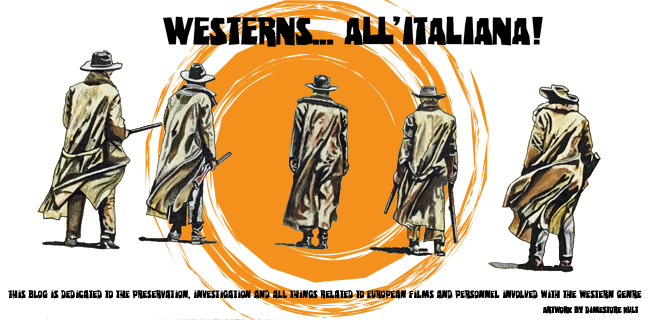
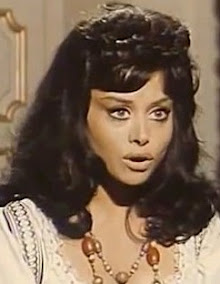
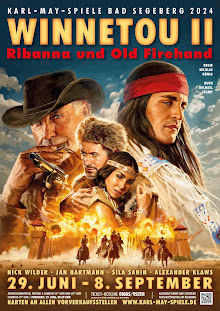



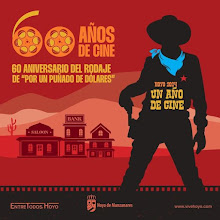

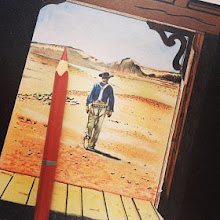

Ah, who is that?
ReplyDeleteSpeaking for Tom, that's Alex Cox, who's ironically never made a western (although Walker has elements, as does Straight to Hell)
ReplyDeleteOK. Now I recognize him. He looks different when he's not talking. Thanks Brian.
ReplyDeleteHi my name is Esme Buxton and I am an A level student in the UK. I am currently studying the Western genre in Film Studies and have started to research for a paper about the popularity of Westerns from a social and historical view point. I am trying to answer the question; why were westerns so popular with audience and how have the stood the test of time?
ReplyDeleteI see you have been researching Western film since the 80's and have a BA in American History, I was wondering if you could be so kind as to give me some information about the popularity of the Western from an historical sense. For instance, did the McCathy era have any effect on the type of films distributed? I'll leave my email address if you would like to get in touch. thank you for your time.
Esme Buxton
gifted_guru@hotmail.com